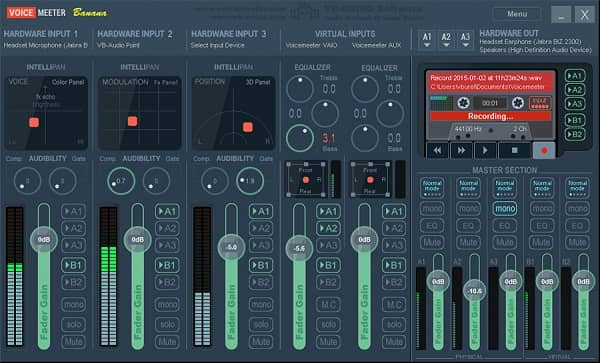PLEASE READ BEFORE ATTEMPTING TO INTALL!
Oct 28, 2019 Ex Soundflower users may have a new solution for audio routing on Mac, thanks to a free solution posted recently to GitHub by Existential Audio. Running in the background as a virtual input/output, and appearing in your DAW alongside your in/out interface options, Blackhole can shuttle audio around your system to connect anything to anything under the hood. In the Soundflower 'Tools' folder there is a Ruby script called 'load.rb' which will copy the built kext into the install location using sudo. This sets the owner and group correctly. When you run the 'build.rb' script it builds the project with Xcode and then runs the 'load.rb' script automatically.
Soundflower for Mac. Recover lost data on your Mac, prevent accidental data loss, backup failing disks. Parallels Desktop for Mac. Free to try Run Windows and other operating systems.
Soundflower For Mac Problems

Note that the even though this Soundflower extension is signed, but the installer is not! You will have to hold the control key down to open the Soundflower.pkg installer for the first time.

Apple makes you jump through a few hoops. The first time you run the installer (Soundflower.pkg), it will ask for your admin password, and will FAIL! A security alert will appear, with a button to take you to System Preferences 'Security & Privacy - General' pane. Once there, there should be an 'Allow' button (**) that you will need to click on to give permission to use Soundflower (developer: MATT INGALLS). Then, RUN THE INSTALLER AGAIN. It should inform you installation was successful. If the 'Allow' button is disabled, you may need to click the lock icon in the bottom lower left corner first.

(**) If you see an 'Open Anyway' button in the Security Preferences, this is something different!!! Most likely because you tried (and failed) opening the installer by double clicking without holding down the control key. If so, click the 'Open Anyway' button which will display another window. Then click the 'Open' button in that window to launch the installer. Now you can follow the instructions above to get the 'Allow' button to appear in the Security Preferences.
NOTE: This is only the Soundflower kernel extension. The SoundflowerBed app is retired. A new replacement is in the works. In the meantime, you can take your chances with an older version of Soundflowerbed, but you can do a lot with a Multi-Output Aggregate Device. Here's an example:
Say i want to play some audio in iTunes, but record it in Quicktime while listening to it out of the built-in speakers. Here is how i would set it up:
*in iTunes:
start playing audio

Open Audio MIDI Setup: (found in /Applications/Utilities)
hit the '+' button in the bottom left corner and select 'Create Multi Output Device'
in the the panel that appears on the right, select 'Built-in Output' AND 'Soundflower (2ch)'
then hit the button with the gear icon bottom left and select 'use this device for sound output' (you should still be hearing your iTunes output -- it is now going to both Soundflower and the built-in speakers)
Then In Quicktime:

Soundflower For Mac Catalina
create a new audio recording
in the popup menu next to record button select 'Soundflower (2ch)' as the input
(you should now see record levels changing)
hit record!
